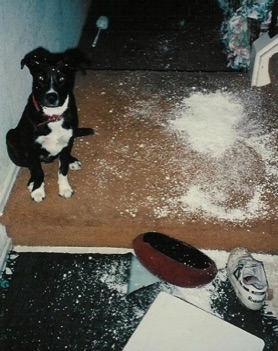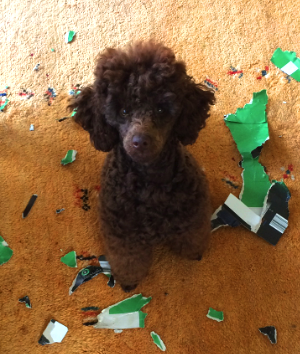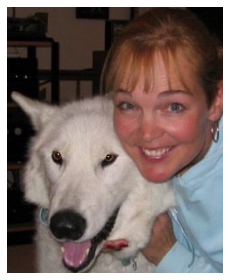Dog Separation Anxiety
Separation anxiety is a common problem. Whether you just adopted a dog from the animal shelter or brought home your brand spanking new puppy from the breeder, your new companion will have to learn to be left home alone. When you leave, in your dog's mind, he has just been locked up in a strange place without knowing where his next meal is coming from or whether you’ll ever come back. This will cause him great distress which can cause him to bark, whine, pee and poop more (especially in a place that smells the most like you such as your bed), claw and scratch at doors and windows, or get generally destructive like eating the couch. This is no fun for anyone.
Solution
Pick an area of your house that is easiest to dog proof, such as a gated bathroom or laundry room. Ideally this area will have no carpeting and will be mostly insulated from outside noises. Some dogs get really nervous when they hear outside noises. Please don't use a gate that a dog could climb. Only use one with vertical bars. Tags can get hung up on cross bars, and unfortunately many dogs have gotten choked to death this way. A crate is fine too, but shouldn’t be used for more than 4 hours at a time, except at night when metabolism slows down. Some very young puppies or elderly dogs cannot hold their bladder for even 4 hours though and leaving them in the crate too long would cause them to soil the crate. Please take your dog's collar off before putting him in the crate.
Now that you’ve picked an area, it’s time to get your dog to like being in that area by himself when you are home. To accomplish that, get him something really great like a stuffed kong, buster cube or raw bone. Stay in the area with him until he’s happily slurping or chewing. Then just take a couple of steps away and come right back. Wait till he is slurping again and then walk away a bit farther and come right back. Then walk away a bit farther still, etc. You can also throw treats at him every time right before you walk away. The object is for Rover to stay calm during all this and to learn that being alone is a good thing because he gets yummy things when you leave. If he starts to whine or bark a lot, you’re moving too fast, so proceed more gradually.
Once he is fine being left alone in his area while you walk around the house, it is time to start leaving the house. Here too you want to go about it very gradually. First just walk in and out of the house, then get in your car and go around the block, then stay way a little bit longer and then longer still. Then start mixing it up.....sometimes you leave for 1 minute, then 15 minutes, then 4 minutes, then 20 and so forth. That makes your dog think that when you leave you could be right back. Most separation problems come about by yoru dog winding himself up into a frenzy during the first 30 minutes of your absence. So once he can stay relaxed those first 30 minutes, he’ll be fine.
We find that it's very helpful to keep an eye on your dog while you are going through this process. Our favorite way to do this is by WYZE camera. With this camera, you can not only see your dog, but also listen and talk to him.
Additional Tips
Keep the radio or TV on to drown out outside noises and to keep his environment the same whether you’re there or not. Or even better put on some white noise. Provide interesting chewies or activities such as the kong, buster cube or raw bones. Exercise Rover before you leave. Make your coming and goings as low key as possible....ignore your dog for 15 minutes before you leave until 15 minutes after you come home. Keep his area dimly lit to promote snoozing. If your your dog has a severe case of separation anxiety ask your veterinarian for a prescription of Separation Anxiety drugs. This won’t fix the problem by itself but will help speed the program along. If you come home to a mess after all, whatever you do, do not scold or punish your dog. This will only increase his anxiety and make the problem worse.

This article is a summary only of a treatment protocol for separation anxiety.
For more information please call or text (303) 910-3931
Disclaimer: Please note that the information herein is provided as a free service. It does not create any form of legal or professional relationship and Affection & Praise Family Dog Training, Inc. does not accept any liability or responsibility for any action taken or avoided on the basis of information provided. It is dangerous to rely on generalized information or guidance. You should always seek independent professional advice in order that it can be tailored to your own individual circumstances.

